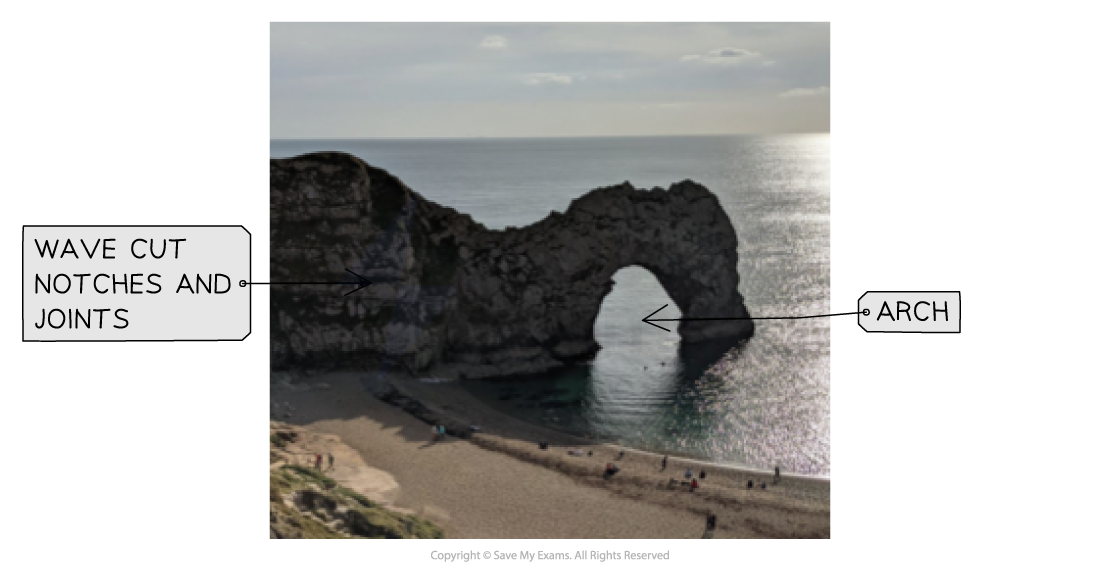Coastal Erosional Landforms
- Erosion causes a range of landforms at the coast including:
- Wave cut platforms
- Caves, arches and stacks
Exam Tip
The most common types of erosion that contribute to the formation of landforms are hydraulic action and abrasion/corrasion so make sure you know the definitions of these and can use them in your answers.
In questions asking about landform formation you can use diagrams but in order to get credit for them they must be annotated in detail!
Wave cut platform formation
- At high-energy coastlines, hydraulic action and abrasion can cause the formation of wave-cut platforms
- Powerful destructive waves attack the base of the cliff at high tide
- The hydraulic action and abrasion create a wave-cut notch which over time increases in size
- This is called undercutting
- Eventually the overhang created by the undercutting collapses due to weathering and gravity
- The cliff retreats, leaving a wave cut platform that is exposed at low tide

A wave cut platform in Portugal

Diagram to show the formation of a wave cut platform
Cave, arch and stack formation
- At a headland, where the rock is hard, erosion is slow and can lead to a variety of landforms
- Wave refraction concentrates wave energy onto the headland and can contribute to the formation of caves, arches, stacks and stumps
- Joints in the headland are susceptible to erosion by hydraulic action
- Over time the joints widen forming a cave which is enlarged by hydraulic action and abrasion
- Eventually erosion cuts through the headland forming an arch
- The roof of the cave will eventually collapse due to gravity and the lack of support
- This leaves a stack which will over time be eroded by weathering, abrasion and hydraulic action to form a stump

Erosional features at Durdle Door on the Dorset Coast
 Erosional landforms, cave, arch and stack
Erosional landforms, cave, arch and stack
Exam Tip
When answering a question about landforms the examiners are looking to see that you understand sequence and change over time. To do this use words like ‘next’, ‘over time’, ‘then’, ‘eventually’ and ‘finally’.



